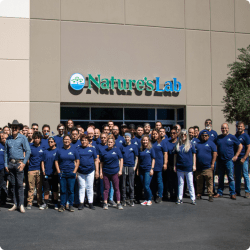

We have more than 200 bones and 200 joints in our bodies. Our intricately designed bones and joints can perform many complex movements that we often don’t give much thought to. When we start to experience health problems related to our bones and joints we truly value just how important they are from the tip of our skull to our smallest pinky toe. Follow these tips to learn how you can keep your bones and joints healthy and strong for the long haul.
Keep Weight in a Healthy Range
Did you know that carrying just a few pounds of additional weight can put pressure on your joints? For instance, the knees can experience an increase in weight bearing load of 30-60 pounds for every additional 10 pounds gained. Being overweight can put you at greater risk for developing bone degenerating conditions later in life.
Strength Training

Weight bearing exercises signal the bones to increase in density. When we engage in physical activity like walking or running, we are putting most of the pressure on our lower body, and not the upper body. Bone formation corresponds directly to the area where the force was applied. That’s why it is important to have a full body workout that can provide mechanical loading to both the upper and lower bodies. Weight lifting or resistance training is the most effective exercise you can do to promote bone strength.
Train Smart

If you’re ready to jump right into exercising with the goal of strengthening bones and joints, there’s a few things to keep in mind. High impact exercises like running do increase bone strength more than lower impact exercises, but they also increase the pressure on joints. If you already experience health problems related to your bones and joints, try a lower impact workout like walking or swimming which completely removes the pressure of gravity on the joints. You can still try slower, more controlled weight lifting movements to increase strength with a much lower risk of injury, fractures and falls. Take a day off between weight resistance workouts to give your muscles, bones and joints time to repair themselves and recover or you could risk doing more harm than good. Of course, you will want to get your doctor’s okay before beginning any new exercise routine, especially if you have specific health concerns.
Enjoy Alcohol in Moderation
Studies show that excessive alcohol intake, more than a glass a day is associated with greater risk of bone porosity. Alcohol can wreak havoc on the body in many ways. It can reduce the production and absorption of vitamins that are important to bone strength including calcium and vitamin D. Alcohol can also elevate the body’s cortisol levels which can also weaken bones.
Don't Smoke
If there is one thing that will make a big impact on your joint and bone health it's giving up smoking. Smoking creates an inflammatory environment that affects joint pain by increasing cortisol. It also destroys osteoblasts (the cells that make bone) and depletes other nutrients needed to keep bones intact.
Eat Nutrient-Rich Food

Fatty fish and mushrooms are rich natural sources of vitamin D which is essential for absorption of bone-building calcium. Most people don’t get enough vitamin D due to diet or lack of sunshine. A quality formula like Nature's Lab Vitamin D3 Plus K2 is one way to supplement a healthy diet with more vitamin D.

If you enjoy rich and spicy curry dishes, here’s a bit of good news. Turmeric, a main component in curry, is a powerful anti-inflammatory that can have a positive effect on joint stiffness.* If curry is a little too spicy for you, a turmeric supplement can give you a generous serving of this antioxidant. A quality turmeric supplement should contain black pepper extract such as BioPerine to increase the absorption of this nutrient.* Naturally occurring compounds known as curcuminoids are what really give turmeric it’s anti-inflammatory properties, so it’s also important to choose a formula that has a standardized curcuminoid content. Nature's Lab Turmeric Extract with Curcumin C3 and BioPerine provides 1,000 mg of turmeric extract with 95% standardized curcuminoids in just two capsules.

Bone broth is one of the few food sources that has a high amount of collagen and hyaluronic acid. Hyaluronic acid is found throughout the body and in the joints where it provides lubrication and cushioning while collagen is a protein building block present in cartilage, ligaments and bones. If you don't have time to simmer your own bone broth for 24 hours you can choose a supplement like Nature's Lab Hyaluronic Acid with BioCell Collagen and MSM to get these bone and joint nourishing nutrients in a more convenient form.
Nature’s Lab is your one-stop shop for quality supplements that support your bone and joint health. Take a look at our comprehensive formulas in our Bone & Joint Health Collection as well as our many other supplements designed to improve your wellness.*
References
Jennings, K.-A. (n.d.). Foods for your joints: Cherries, oatmeal, salmon, walnuts, kale, and more. WebMD. Retrieved February 10, 2022, from https://www.webmd.com/arthritis/features/joints-food
Gregory, P. J., & Fellner, C. (2014, June). Dietary supplements as disease-modifying treatments in osteoarthritis: A critical appraisal. P & T : a peer-reviewed journal for formulary management. Retrieved February 10, 2022, from https://www.ncbi.nlm.nih.gov/pmc/articles/PMC4103717/
Bone and joint health fact sheet. University of Iowa Hospitals & Clinics. (2018, November 9). Retrieved February 10, 2022, from https://uihc.org/health-topics/bone-and-joint-health-fact-sheet
MacMillan, A. (2017, April 26). Taking a day off from your workout is actually good for you. Time. Retrieved February 10, 2022, from https://time.com/4754622/workout-recovery-protects-bones/
Jaret, P. (n.d.). The arthritis diet: How excess weight damages your joints. WebMD. Retrieved February 10, 2022, from https://www.webmd.com/arthritis/features/weight-joint-pain







